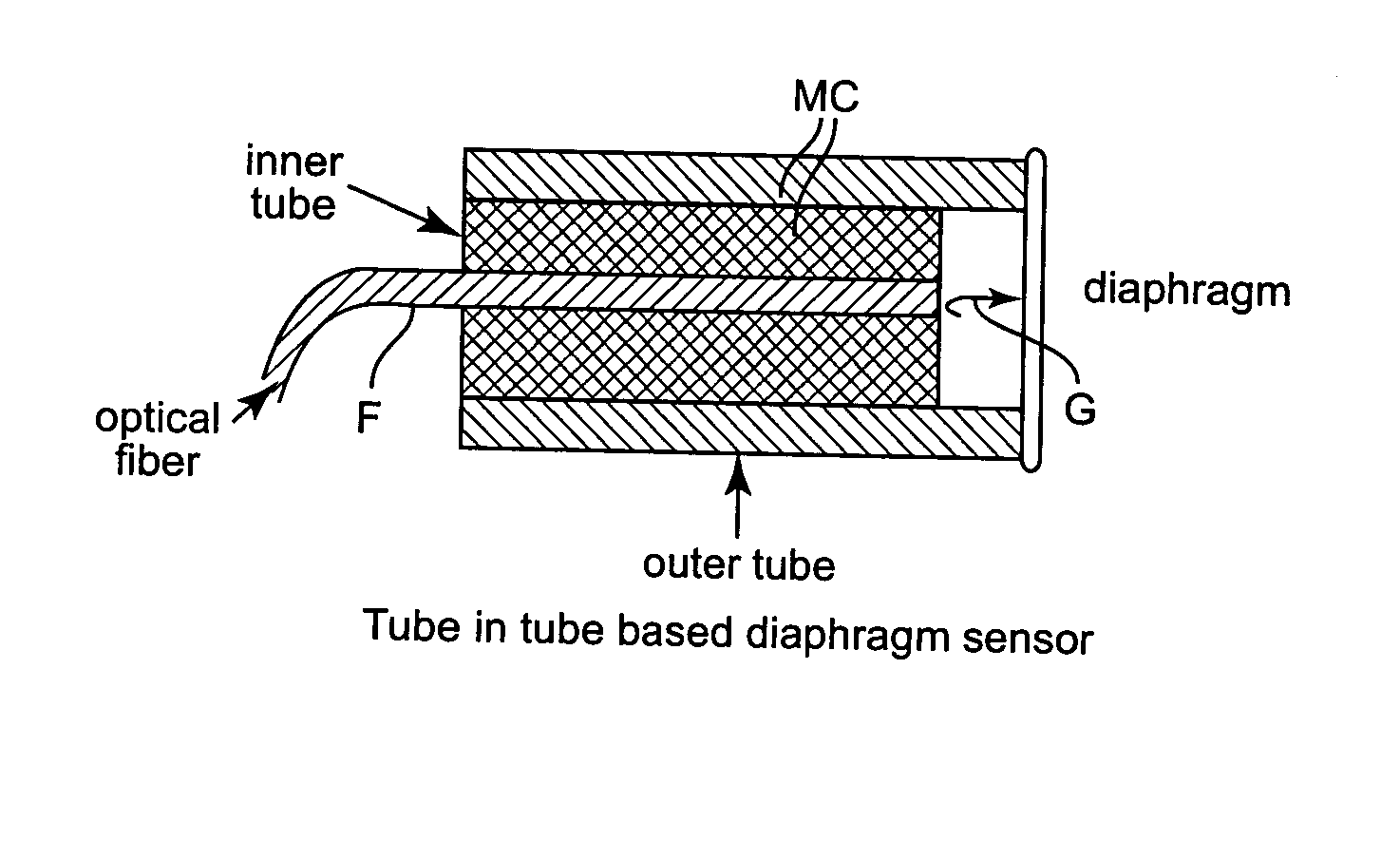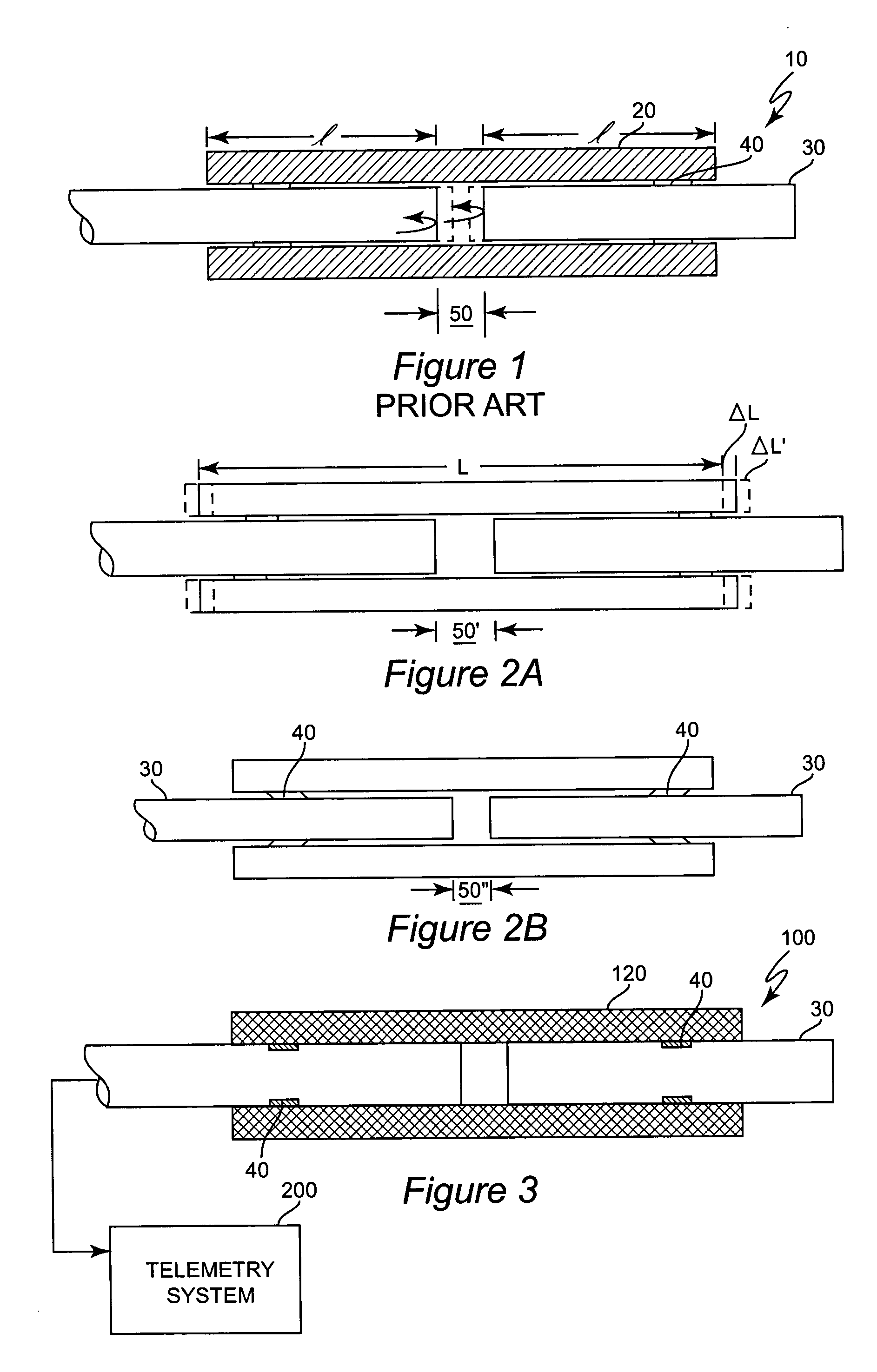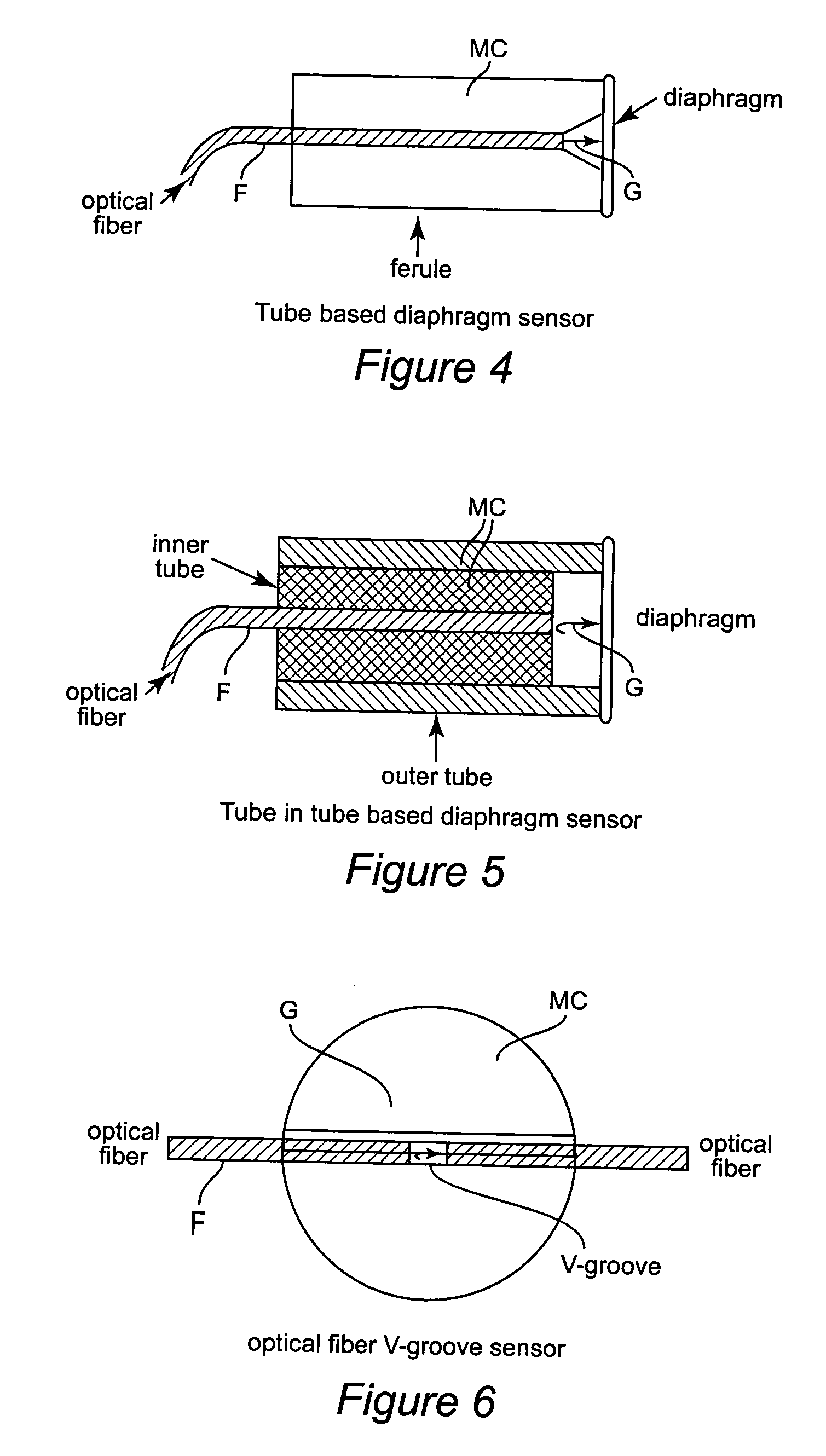Creep and viscous flow resistant fiber optic sensor
a fiber optic sensor, viscous flow technology, applied in the direction of fluid pressure measurement, fluid pressure measurement by electric/magnetic elements, instruments, etc., can solve the problems of sensor gap length, sensor gap length, and unpredictably altered tube geometry to maintain sensor gap length
- Summary
- Abstract
- Description
- Claims
- Application Information
AI Technical Summary
Benefits of technology
Problems solved by technology
Method used
Image
Examples
Embodiment Construction
[0022] Referring now to the drawings, and more particularly to FIG. 1, there is shown a conventional structure of a fiber-optic sensor 10. As alluded to above, the body of the sensor is formed of a fused silica tube 20. A length of fiber optic material 30 is inserted in each end of the tube and fixed in position by bonds 40 which are preferably of short length along the tube but may be placed at any location along length l. In general, a greater separation of the bonds 40 will favor sensing of strain or together with a large differential of coefficients of thermal expansion (CTE) between the fiber optic material and the tube material will favor sensing of temperature (e.g. relative to pressure) while a good match of CTE and reduced separation will favor sensing of pressure relative to strain and temperature. That is, by adjustment of the geometry and material properties, relative sensitivities of the length of gap 50 to strain, temperature and pressure may be altered at will within ...
PUM
 Login to View More
Login to View More Abstract
Description
Claims
Application Information
 Login to View More
Login to View More - R&D
- Intellectual Property
- Life Sciences
- Materials
- Tech Scout
- Unparalleled Data Quality
- Higher Quality Content
- 60% Fewer Hallucinations
Browse by: Latest US Patents, China's latest patents, Technical Efficacy Thesaurus, Application Domain, Technology Topic, Popular Technical Reports.
© 2025 PatSnap. All rights reserved.Legal|Privacy policy|Modern Slavery Act Transparency Statement|Sitemap|About US| Contact US: help@patsnap.com



